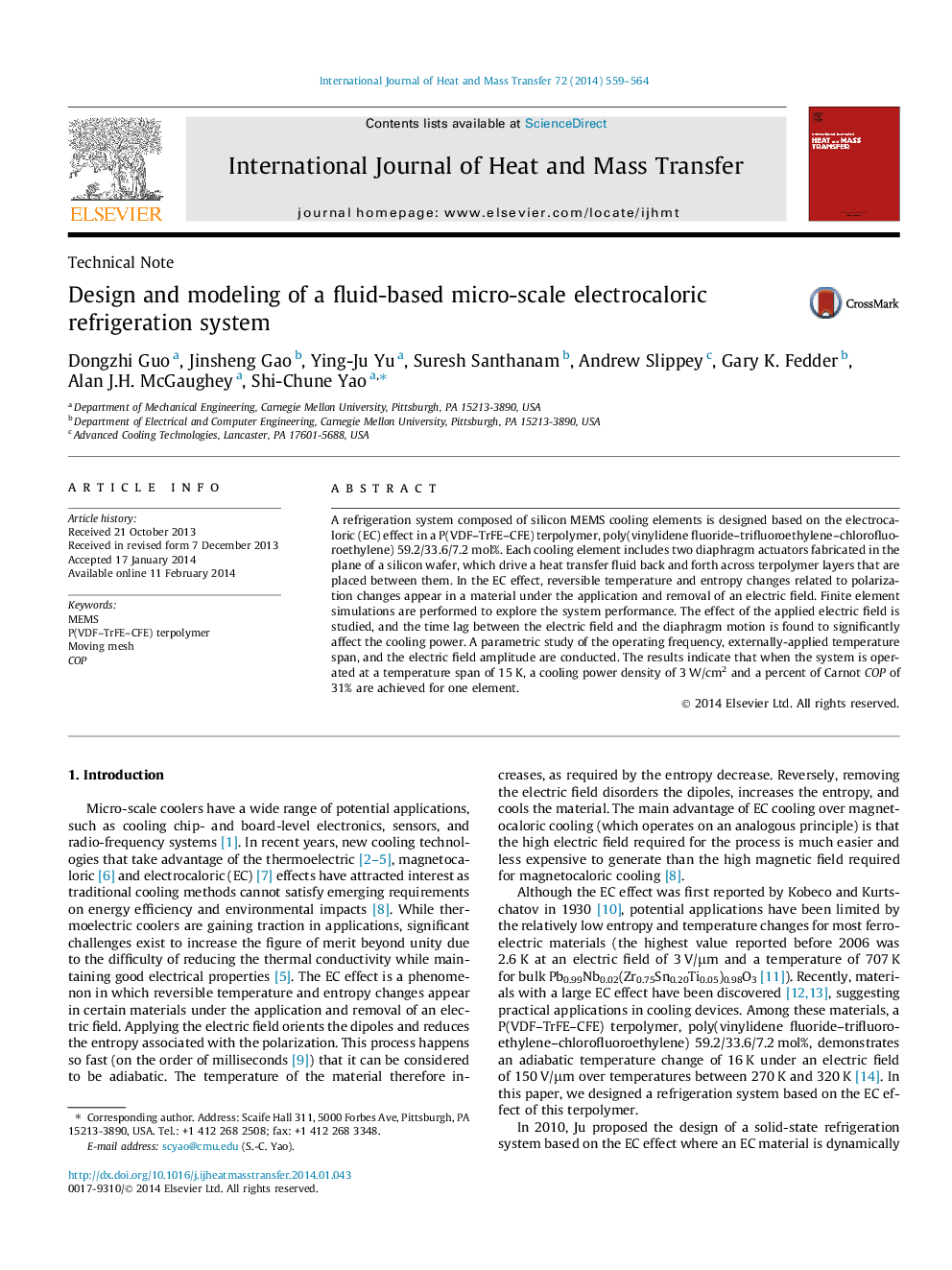| Article ID | Journal | Published Year | Pages | File Type |
|---|---|---|---|---|
| 7057419 | International Journal of Heat and Mass Transfer | 2014 | 6 Pages |
Abstract
A refrigeration system composed of silicon MEMS cooling elements is designed based on the electrocaloric (EC) effect in a P(VDF-TrFE-CFE) terpolymer, poly(vinylidene fluoride-trifluoroethylene-chlorofluoroethylene) 59.2/33.6/7.2Â mol%. Each cooling element includes two diaphragm actuators fabricated in the plane of a silicon wafer, which drive a heat transfer fluid back and forth across terpolymer layers that are placed between them. In the EC effect, reversible temperature and entropy changes related to polarization changes appear in a material under the application and removal of an electric field. Finite element simulations are performed to explore the system performance. The effect of the applied electric field is studied, and the time lag between the electric field and the diaphragm motion is found to significantly affect the cooling power. A parametric study of the operating frequency, externally-applied temperature span, and the electric field amplitude are conducted. The results indicate that when the system is operated at a temperature span of 15Â K, a cooling power density of 3Â W/cm2 and a percent of Carnot COP of 31% are achieved for one element.
Keywords
Related Topics
Physical Sciences and Engineering
Chemical Engineering
Fluid Flow and Transfer Processes
Authors
Dongzhi Guo, Jinsheng Gao, Ying-Ju Yu, Suresh Santhanam, Andrew Slippey, Gary K. Fedder, Alan J.H. McGaughey, Shi-Chune Yao,
